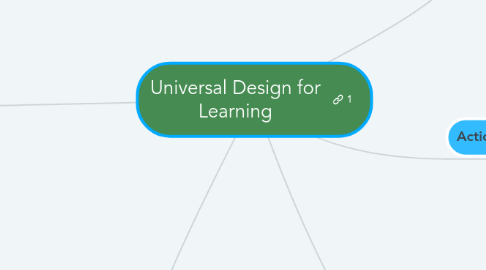
1. Representation
1.1. This is the "what" of the learning process and will impact how the student is able to comprehend the material that is being taught. Students need multiple ways in which they can receive the new knowledge to address any prevention in which the material can be absorbed. This might be a printed media in which a blind student or a foreign student where the written language is a prevention from understanding. This is why there would need to be multiple medias to convey the ideas and understandings (Gordon, Meyer, & Rose, 2016). There are again three options that can bucket the representation needed.
1.1.1. Options for perception
1.1.2. Options for language, mathematical expressions, and symbols
1.1.3. Options for comprehension
1.1.3.1. In my own lesson regarding the strength of paper, there are multiple ways in which comprehension can be shown regarding the knowledge being conveyed. The first of which is after understanding how the strength can be impacted by using the properties of paper, the students can then participate in applying these understandings in developing a structure of their own choice, but it must show how the initial strength has been impacted for the better. Another form would be to give the students multiple forms of the use of paper and ask to rate the use by what is the weakest and what is the strongest and discuss why they ordered their choices in the way they did.
1.1.4. (Gordon, Meyer, & Rose, 2016)
2. Engagement
2.1. This is the "why" of learning that will impact and motivate students to dive into their learning and drive them to be successful and expert learners (Gordon, Meyer, & Rose, 2016). The is the affective domain in which students develop interest, understand the purpose, and find the motivation. It is important to incorporate flexibility when working on this as it needs to meet the needs of each learner individually. As this is developed, there needs to be options along the way to continue the promotion of engagement through three options.
2.1.1. Options for recruiting student interest
2.1.2. Options for sustaining effort and persisting
2.1.3. Options for developing the ability to self-regulate
2.1.4. (Gordon, Meyer, & Rose, 2016)
2.2. Ways in which my lessons can create a space for this engagement is by having activities in which students could actively engage and participate or passively engage and participate. Creating the space in which a student can ask questions or generate ideas or solutions with how they feel comfortable is how you could keep them engaged.
2.2.1. This could be done in my lesson about teaching the strength of paper by having the class list examples of materials and categorizing them into weak or strong based on their understanding. This can be done where everyone has a chart and they have to take a list of materials and place them on the chart for either left for strong, or right for weak. Then we can discuss as a class about where everyone grouped the material and why they did it that way. This way students can participate in the individual activity where they sort the materials and those who want to discuss can raise their hand to explain how they came to their solution (Gordon, Meyer, & Rose, 2016)
3. When designing curriculum, to ensure that all students are fully taking in all that is possible, the learning must be designed in a way that reaches out to all types of learners. This is why there are three areas that must be taken into consideration when working on what will be taught and how.
4. Action & Expression
4.1. This is the "how" of learning in which the students actively participate in process based on their own needs through three options. This is also known as the strategic network. "Learners differ systematically from the ways that they function strategically" (Gordon, Meyer, & Rose, 2016), meaning that they need to take the best path for themselves in which they can go through the motions and show what they know through multiple medias.
4.1.1. Options for executive funtions
4.1.2. Options for expression and communication
4.1.3. Options for physical actions
4.1.4. (Gordon, Meyer, & Rose, 2016)
